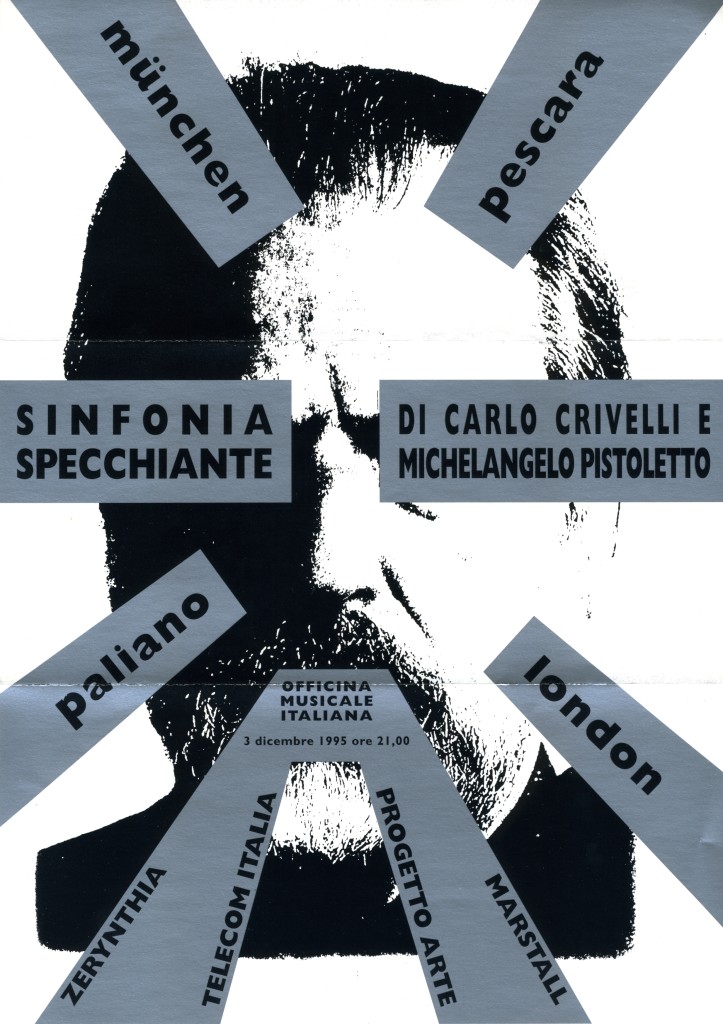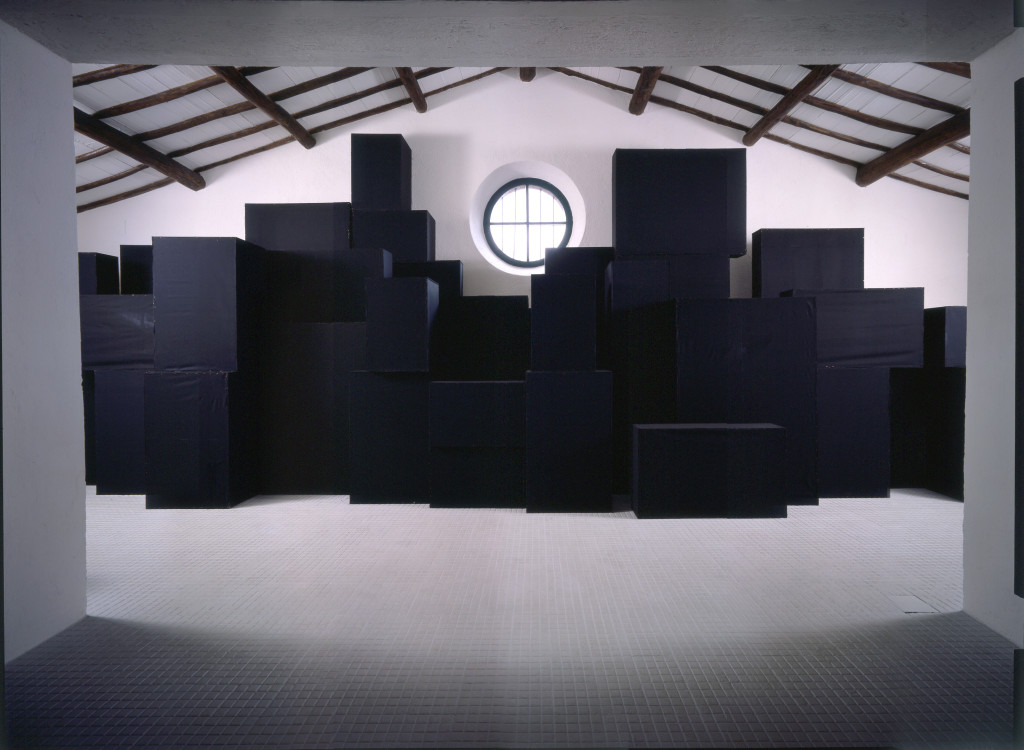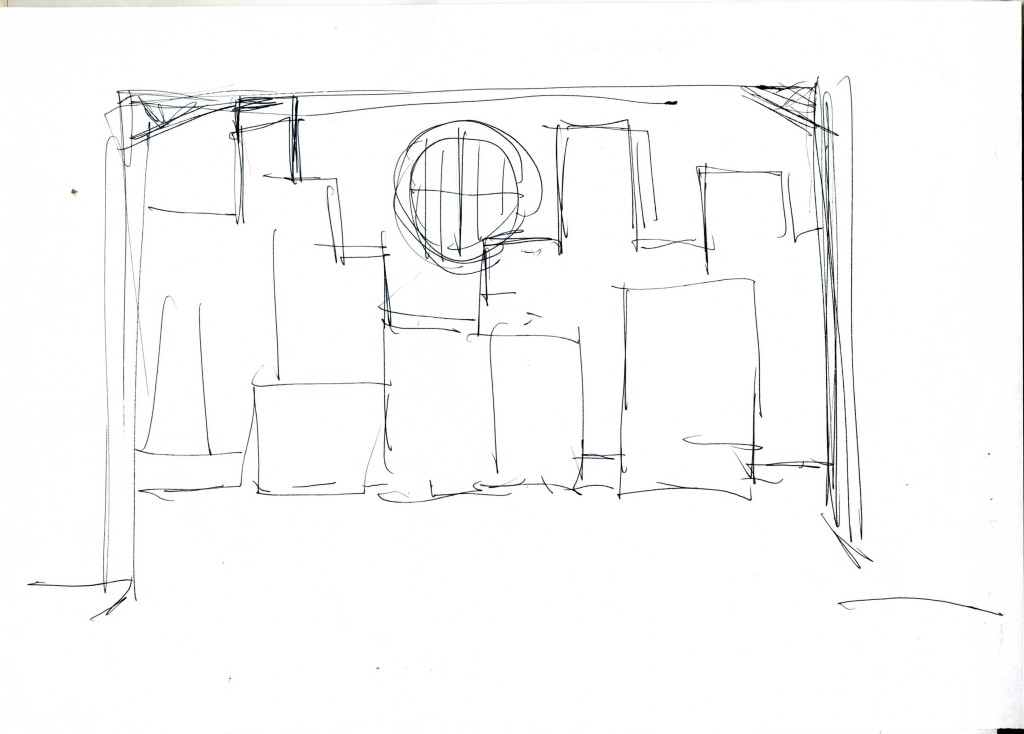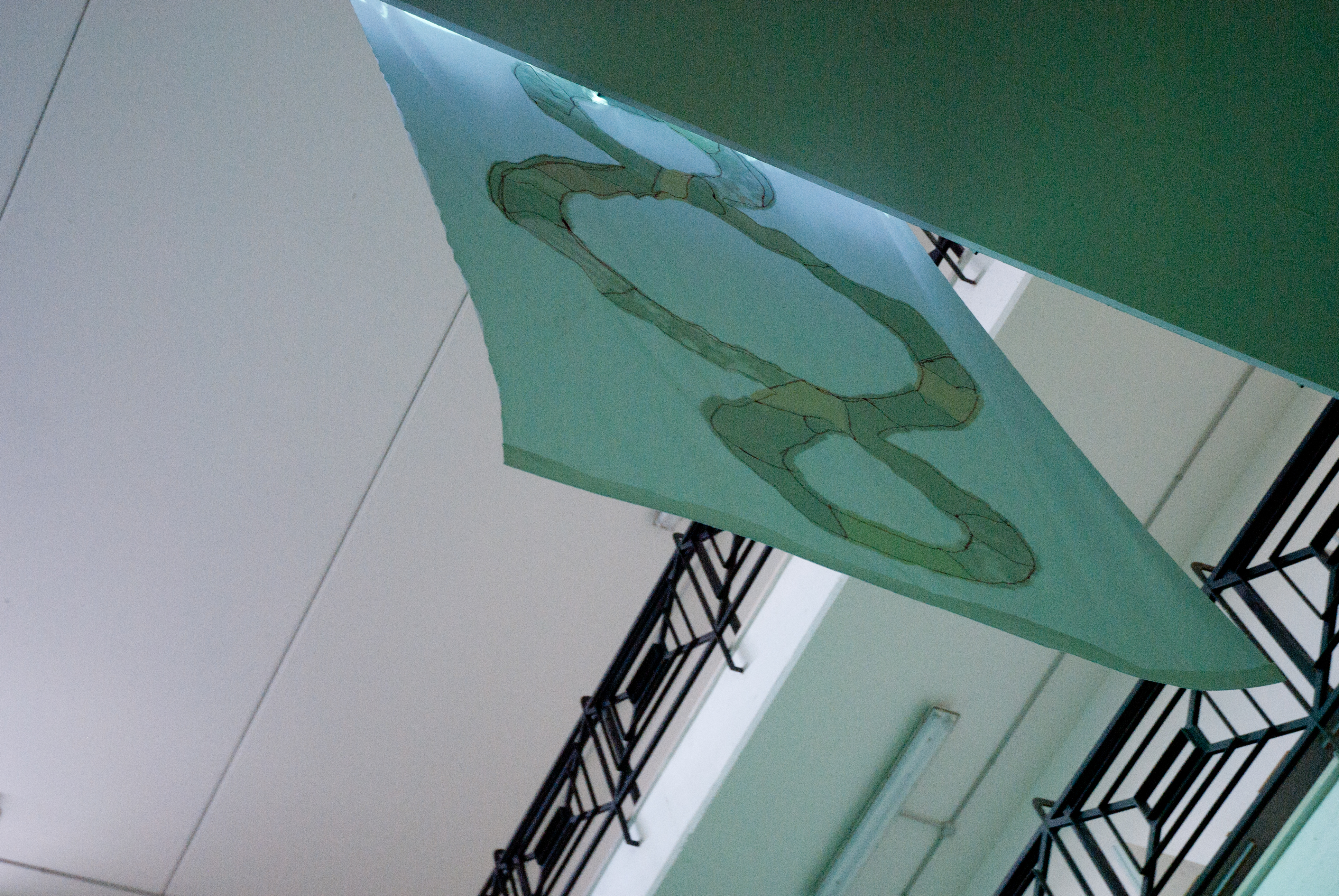Stefania Crobe
IF EVERYTHING IS URBAN
If Holderlin foretold a poetic living, what we see today (looking at the most recent global city planning theories) it’s a solipsistic auto-referentiality which marks out most of the planning, from modernity to our present.
Landscapes that do no longer answer to either needs or desires, and show a lack of authenticity in the project, a lack of connection with reality.
A widespread urbanization, with processes of concentration and dispersion. And the city is only one of these forms of urbanization. But if the city is everywhere and in everything, the dichotomies of city/country, centre/suburbs, urban/rural, turn out to be points of view describing in different and vague ways the whole variable reality.
According to this perspective, in the incessant transformation of the industrialized urban ground, where the agglomeration centres and their operational landscapes intertwine, new centre/suburbs convergence models overlap through places, territories and musical scales, creating new scores in a continuous readjustment of socio-spatial harmonies. A crisis of boundaries definition, which becomes an opportunity when the brink, the crevice, the limen turn to be fertile ground for a possible re-birth, where the symbolic and realistic dimensions combine.

A CENTRE DOES NOT EXIST
Areas on the border, which are accidentally considered outside the city boundaries, and which in this perspective discover a renewed function and become fertile ground for a new prosperity. Areas which are not backward or residual, antithesis of a kind of progress hope for by the nineteenth-century society, but experimental grounds, where to socialise and find out a web of relationships that in the crowded cities, outraged by capitalism and speculation risk to get lost.
In the era of global urbanization a new centrality is given to those areas fundamentally far from the urban hearts, far from where services are offered, once cornerstone of the local communities, being typical today for growing depopulation, state of neglect and decline, or worse, forgetting their history, result of centuries of stratification, because of a never ending homogenisation that overwhelmed them since the second postwar, causing a progressing loss of differences, peculiarities, and history itself.
IF ART IS THE CENTRE, THE CENTRE IS EVERYWHERE
Promethium was one of the Titans, Atlas’ brother, who – if we listen to the mythology – moulded the first man out of mud. Accused of revealing to a man the secret of the fire he had stolen from Zeus, he gets nailed down to a Caucasus cliff, where an eagle would eat his liver from time to time, and the organ would grow again every time.
Promethium, taken as a symbol for progress, was the one who gave sciences and arts to the human race; this meaning the transition from nature to artifice. As Michelangelo Pistoletto would explain himself, a transition from the first to the second Paradise.
An epoch-making change, which produced a discrepancy between what men do and the effects that reflect on the environment, both human and natural; a change which dictates to think back, to act again, to define a new way of acting, a new way of being in the world.
«Today the whole humanity lives in the need of creating a new earthly paradise, through the connection and integration of the two former paradises, the natural and the artificial one. We are now in an epoch-making transition. Saying “Third Paradise” we mean a possible path for all human beings: a new world. Understanding the symbolic function of art, I decided to introduce a symbol which could represent this. The symbol was taken from the mathematical infinite sign, represented by a continuous line that forms two circles. In the Third Paradise, the same line draws three circles, not only two. The one in the middle represents the womb of the new society».
A new society liven up by the commitment towards a conscientious change, a new geography with art at his core, going through all fields of knowledge and making.
Thus, the Third Paradise is a sign which turns to symbolize the will of transformation, a re-birth happening thanks to a shared commitment, through the creation of a global work of art.
CULTIVATING THE CITY. THE THIRD PARADISE TO “MAKETHETERRITORY”
In the rapid rise of modernity and artificiality, man left the territory to its own devices, decreasing it to a function, a frill, a resource to exploit.
Today we are experiencing a general urban falling, where the mort de la ville foretold by Françoise Choay in 1994. A breaking of the co-evolutionary relationships between man and environment. A wreckage that might be used to grow generative seeds if we start again “from an alert acknowledge of the state of things, if we start again from the places”.
A fault which might be resewed, then, and not darned, building up relationships, interlaces, transplanting different parts, even the most conflicting ones.
Encounters that, in order to happen, need a sensory perception in the first place, a creative filter. These, just like what happens in science, should be able to read and translate realities, using their own linguistic code, in order to reach new possible projectuality, in a subjectifying process that goes from one to the multitude.
It’s all about building practises able to activate from the first moment, starting from acquired knowledge and competencies, a kind of probable common life agreements based on the premise that this “crisis of the model” is not a warning about our developing limits, but an indication of a necessary and radical change in life style and needs.
To Promethium’s poisoned gift counterposes the procreative gift of a possible re-birth, which can be done only taking on responsibility, only through the redefinition of priorities, values and the adoption of new different behaviours to integrate back nature and culture. A new way of poetically inhabiting the world. A take on responsibility that art chases better than other things, thanks to its ability to cross borders, opening breeches, swinging between freedom and responsibility, between independence and heteromy, between theory and practice.
It is in this way that the Third Paradise, the ambitious project by Michelangelo Pistoletto and the activity of his foundation Cittadellarte becomes driving force for a new view of urbanity, which draws the attention to the edge, placing the re-birth on the border – urban and disciplinary.
If everything is urban in the margin areas between city and country side, art acts strongly between urban and rural, putting the suburbs at the core of these changes, far from the echo of the city, but still connecting the world.


In the name of this rebirth point of view, many margin areas of the province – usually considered negligible – find a new ferment, they give shape to amorphous bodies, putting art and culture as the heart of a process of repossessing and transforming the urban and social space.
A different geography takes shape from the need of building a third place for thinking and acting between the artificial and the natural world in order for the territories to get productive.
In Exilles, in Val di Susa, the rebirth symbol inhabits the slopes of the Exilles Forte, making a garden formed by eleven thousand mountain lavender plants – typical of that area and linked to the artisanal micro-economy up to fifty years ago – entrusting new social enterprises so to encourage the repopulation of those territories and rescuing the land through organic agriculture.
In the Lepini mountains, the Third Paradise inspired the creation of SITI Social Innovation Through Imagination, a cross-disciplinary itinerant laboratory for urban research and creative experimentation that, in the name of this idea and using the image as a method, acts in processed of co-creation. An invitation to use a different way of looking at things for acknowledgment, for a new semantics and appropriation of the territory, and for the germination of new construction sites for thoughts and actions.
In Lamezia Terme, the Third Paradise becomes the occasion for raise awareness in the local communities and schools over topics like environment, solidarity, responsible transformation and social integration.
This practices are only a few seeds of a global germination that travels around the world. A mapping in the making, which marks changing dynamics and looks at the growing of new creative focal points working to turn the suburbs into a procreative microcosm. They act as an acupuncture within the territories, often placing themselves right where the politics retreats, they act politically, triggering critical processes in reality understanding, building up new imaginary worlds through artistic and creative activity.
This activity transforms the way we perceive, and appears in the uncertainty, the imperceptible or transient, and reveals itself only at a deep attention, when one submerges himself and dives into things. Senses in the first place, where the whole is never given by a sum, and it’s «the inevitable perception of the other, as the other “where” which looks at the hidden side of the cube of which I can only see the part facing me».
© Riproduzione riservata
Stefania Crobe, phd candidate Urban Studies, La Sapienza, Roma.
Creator and curator for SITI (FB | sitidreamers)
Extract from “Il Giornale delle Fondazioni” del 15 novembre 2015.
Cover: ARTE e TERRITORIO. Riflessioni intorno al Terzo Paradiso con Michelangelo Pistoletto
5 novembre 2015, SITI Social Innovation Through Imagination, ISISS Teodosio Rossi, Priverno (LT)
1 The etymology of “paradise” comes from the Persian, meaning the garden, a place protected from harshness and dangers of nature with the help of artifice. M. Pistoletto, Omniteismo e Democrazia, Cittadellarte ed., 2012.
2 Ibidem.
3 A. Magnaghi, Editoriale. Forme e dimensioni territoriali di una nuova domanda di urbanità, in Cellamare C., Scandurra E. (a cura di), Ricostruire la città, Scienze del territorio/ n. 3, Firenze university press, 2015
4 E. Scandurra, Un paese ci vuole. Ripartire dai luoghi, Città aperta edizioni, 2007.
5 Intervista a Tiziana Villani, in E. Scandurra, G. Attili (a cura di), Il pianeta degli urbanisti e dintorni, Derive e Approdi, 2013.
6 M. Merleau-Ponty, Il primato della percezione e le sue conseguenze filosofiche, Medusa 2004.







